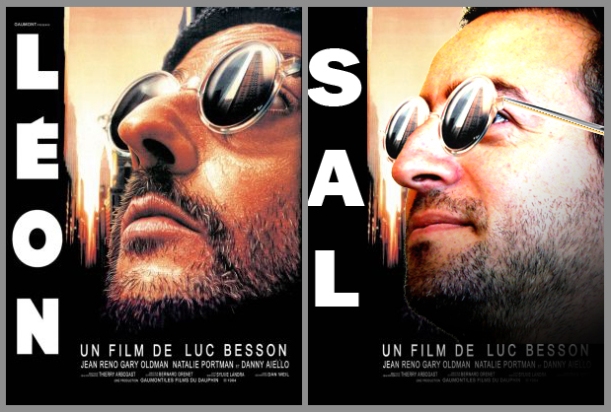
Sal the professional…the professional integrated systems biology researcher
It’s easy to get the wrong impression of the Tough-looking, badass genius, and much harder to accurately portray him. Sure, the Tough-looking, badass genius bears an uncanny resemblence to Leon (the titular character from Leon, the Professional), which contributes to this impression, but partially because he objects strongly to being called a genius. See, the Tough-looking, badass genius, Salvatore Loguercio, worked really hard to become accomplished in his field, so he would prefer that the term genius be reserved for people like Maryam Mirzakhani, the indisputable intellectual who won a prestigious Fields Medal this year. No one disagrees that Maryam Mirzakhani’s brilliance is on a completely different level, but this post isn’t about Maryam Mirzakhani. It’s about Sal.
Sal’s journey into the Su lab began even before he realized it. He originally began working on a dataset generated by the genius-in-charge with insane mental organizational skills back when the genius-in-charge with insane mental organizational skills was still at GNF. The two finally met at the 2009 ISMB conference. While still a Research Associate at the Biotechnology Center of the Technische Universität Dresden (BIOTEC-TU) in Dresden, Germany, Sal began collaborating with the genius-in-charge with insane mental organizational skills on semantic web integration in Gene Wiki plus in 2010. They met again in 2010 at the ISMB conference, and the genius-in-charge with insane mental organizational skills searched exhaustively for ways to officially bring Sal into his team. Unfortunately, the hurdles to do so were high and could not be cleared until the genius-in-charge with insane mental organizational skills moved from GNF to The Scripps Research Institute. After moving, the genius-in-charge with insane mental organizational skills contacted Sal in September of 2011, and officially brought him into the Su Lab in January of 2012.
At first, Sal worked on games with a purpose. In particular, he helped develop Dizeez and GenESP and contributed to the data analysis of The Cure. Towards the end of the year, Sal began moving towards analysis, integration, and modeling of data from collaborators (Dr. Ann Feeney at TSRI) to generate new hypotheses which could then be tested by the Feeney group. Simultaneously, he collaborated with Dr. William E Balch and developed the Network-Augmented Genomic Analysis (NAGA) methodology to integrate and utilize two somewhat disparate datasets generated by the Balch lab: 1. RNAi functional screening data, and 2. protein interaction data from mass spectrometry. Sal’s work on NAGA enables researchers to discover and prioritize pathway proteins and is currently being applied in at least five different labs.
In addition to working hard at multiple projects, Sal has not neglected the importance of networking and attributes much of his success to the mentorship and networking opportunities provided by the San Diego Center for Systems Biology. As a testament to his productivity, Sal was awarded a fellowship from the Cystic Fibrosis Foundation in 2013, and a seed grant from the San Diego Center for Systems Biology. Don’t be fooled by his resemblance to Jean Reno, the Tough-looking, badass genius is pleasant, good-humored, and serious about doing great research.

